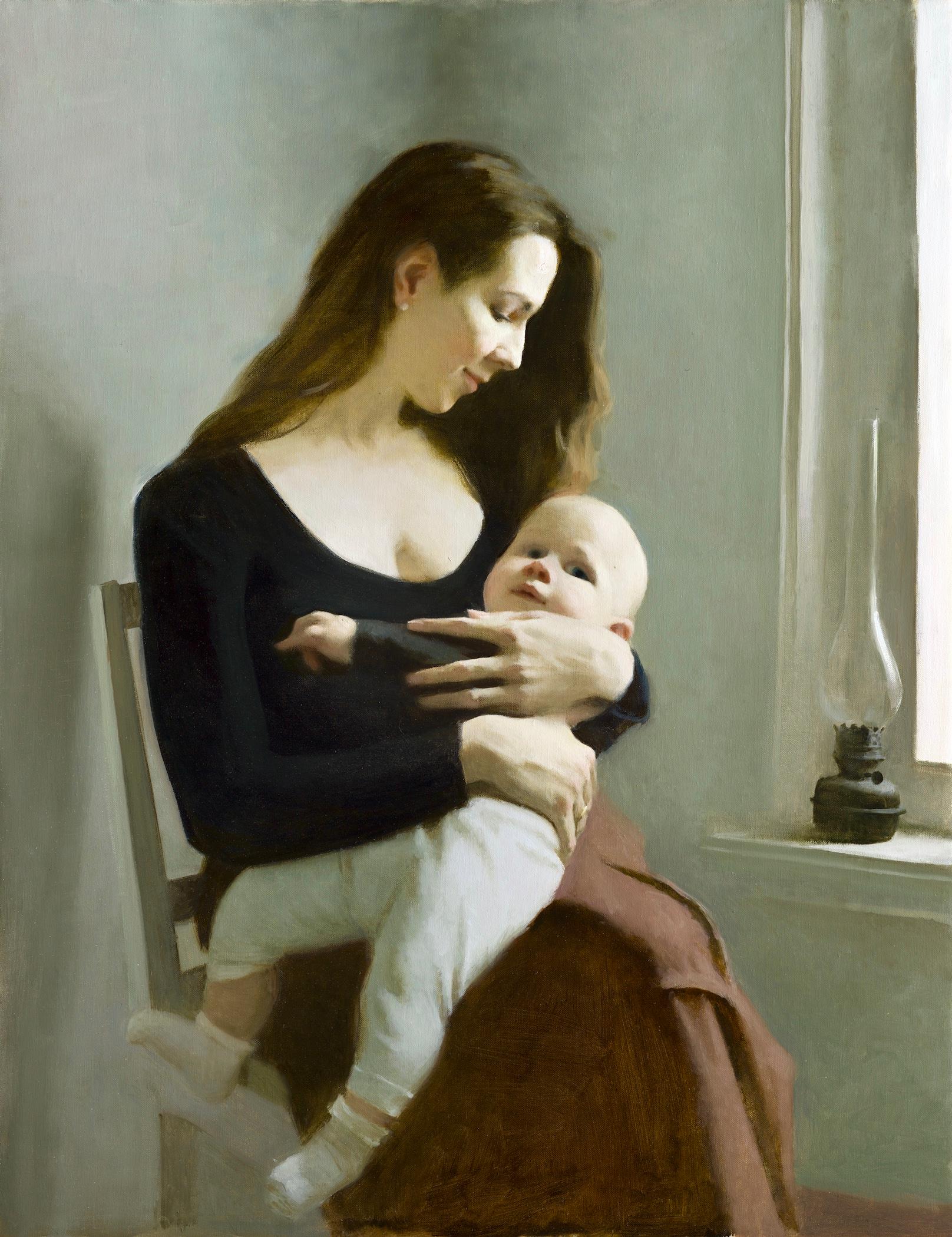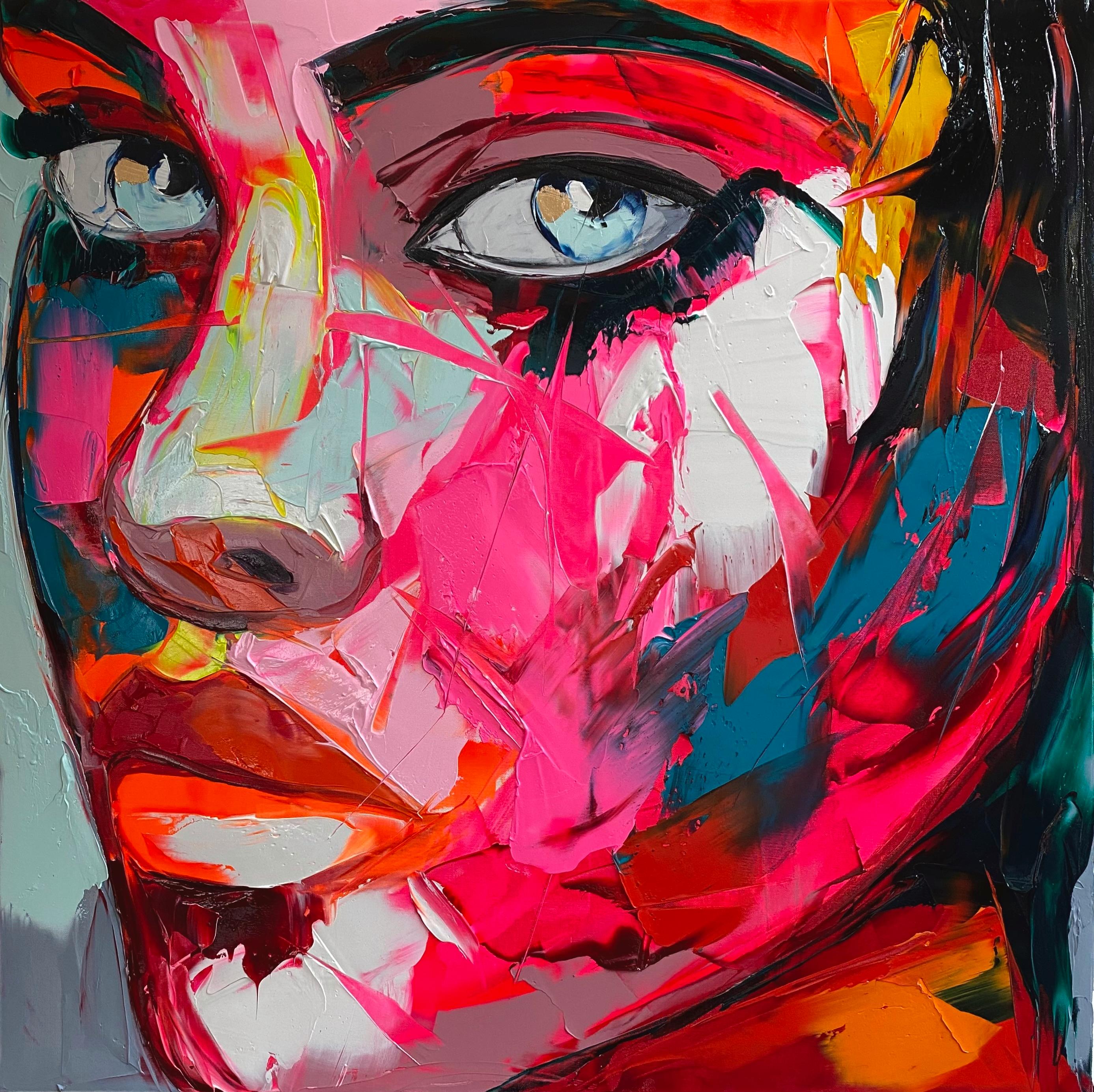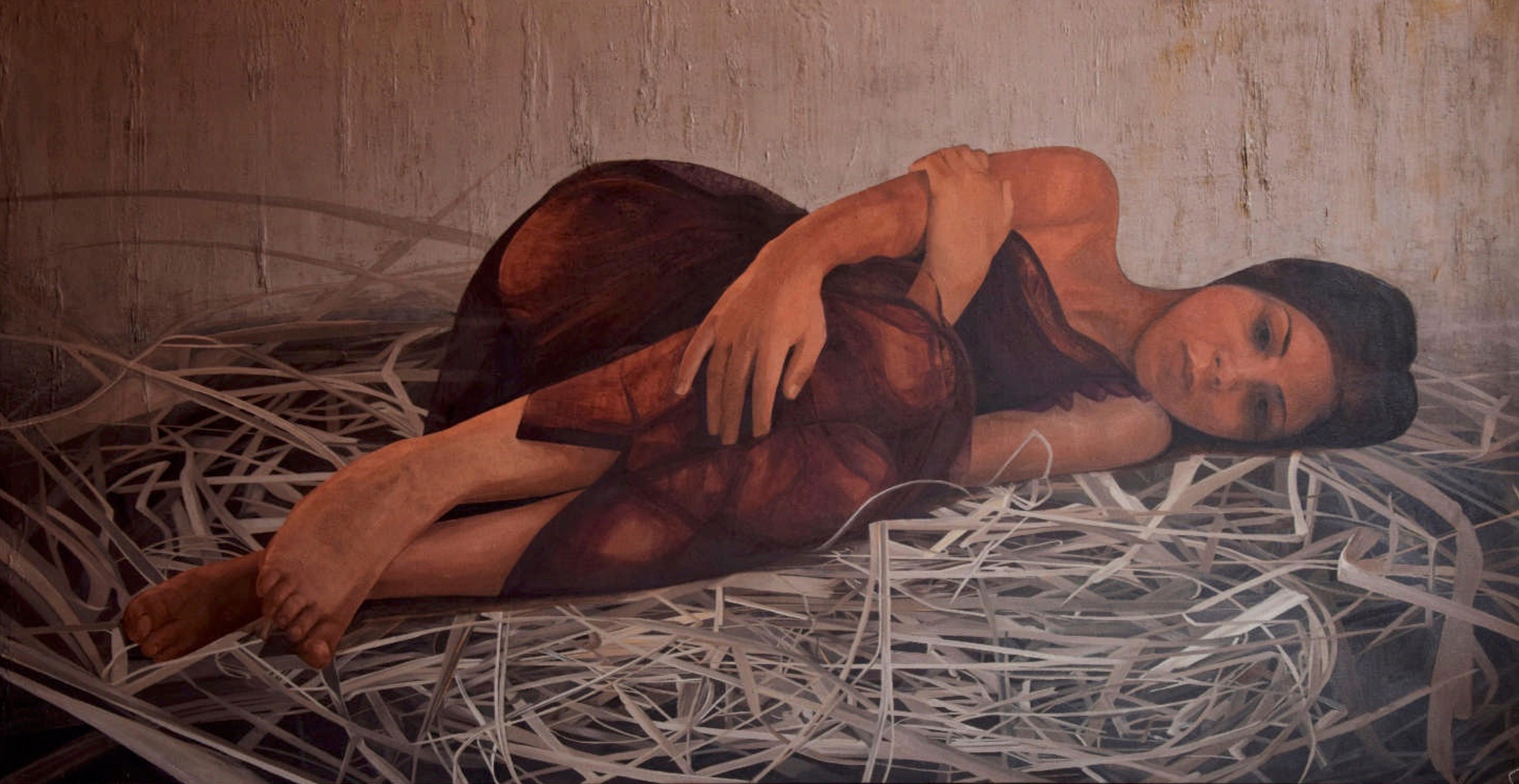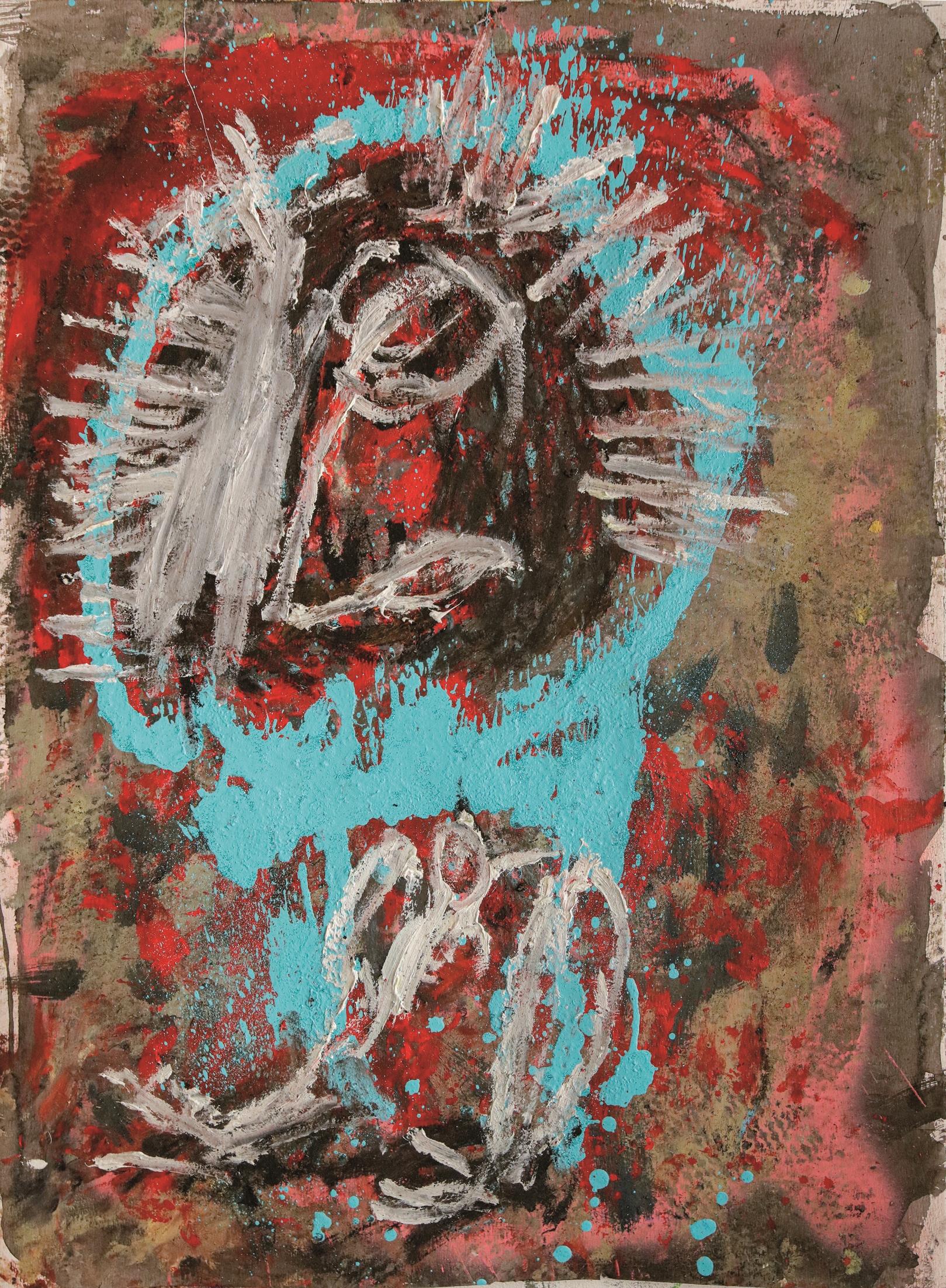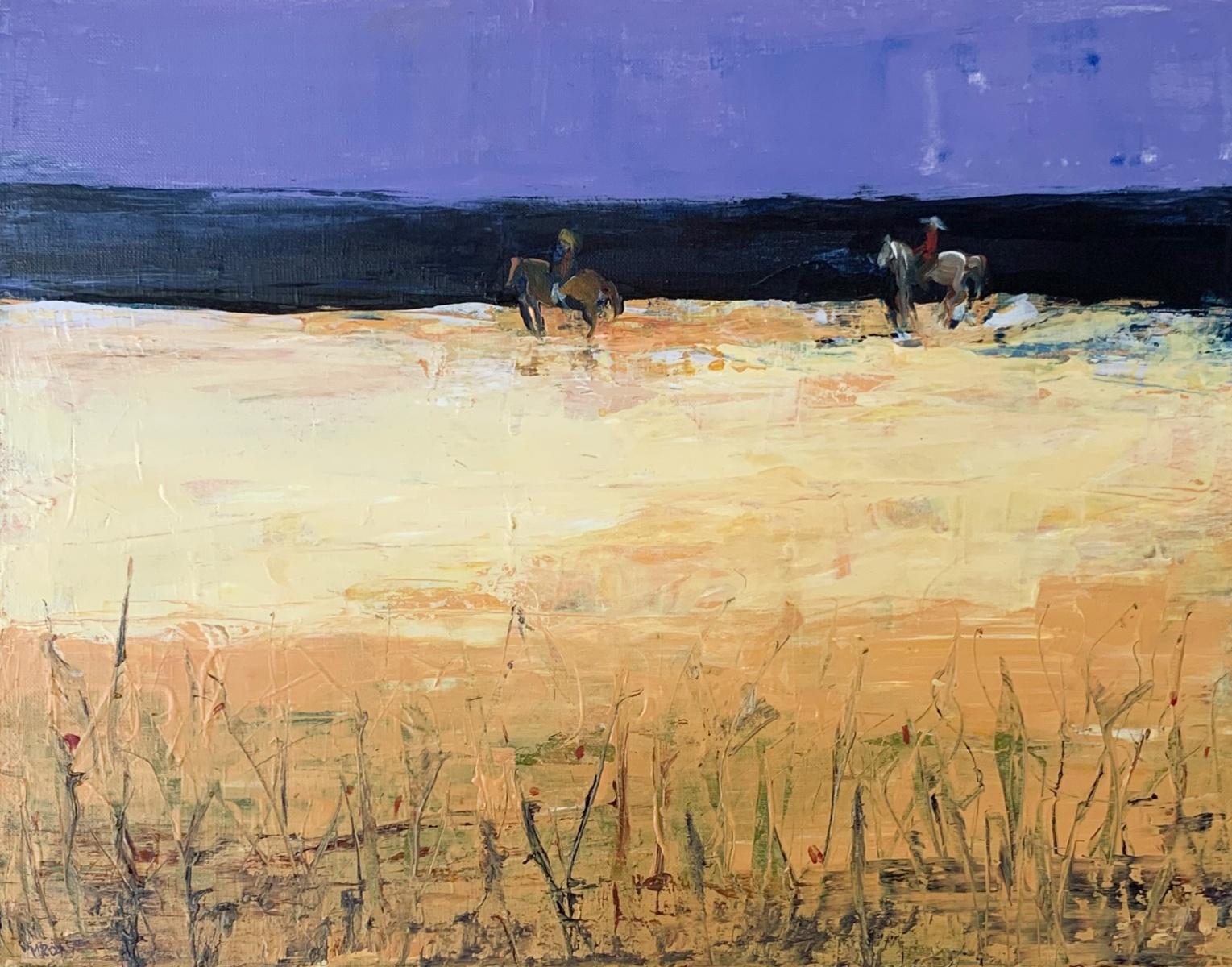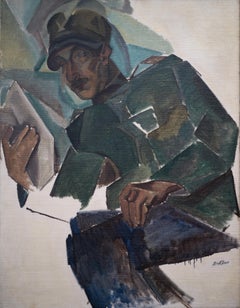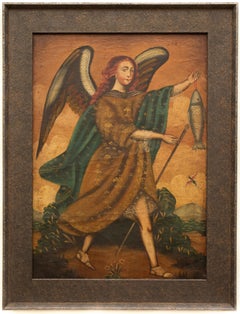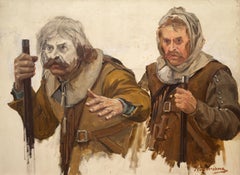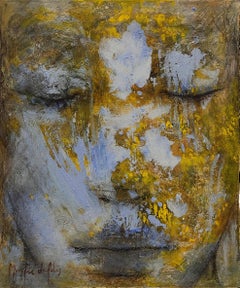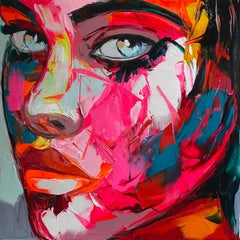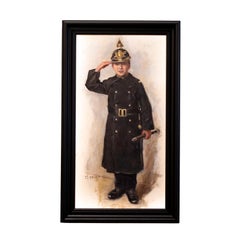
The Young Policeman by Carl Hedelin, Oil on Canvas, Signed, 19th Century
View Similar Items
Video Loading
Want more images or videos?
Request additional images or videos from the seller
1 of 9
Carl HedelinThe Young Policeman by Carl Hedelin, Oil on Canvas, Signed, 19th Centuryc.1890
c.1890
About the Item
- Creator:Carl Hedelin (1861 - 1894, Swedish)
- Creation Year:c.1890
- Dimensions:Height: 22.84 in (58 cm)Width: 12.21 in (31 cm)
- Medium:
- Period:
- Condition:Fine condition with a bright surface, has been cleaned recently. Black frame included.
- Gallery Location:Stockholm, SE
- Reference Number:Seller: CA21191stDibs: LU144527870702
About the Seller
5.0
Platinum Seller
These expertly vetted sellers are 1stDibs' most experienced sellers and are rated highest by our customers.
Established in 2020
1stDibs seller since 2020
118 sales on 1stDibs
Associations
International Confederation of Art and Antique Dealers' Associations
More From This SellerView All
- Cubist Portrait of Gabriele Varese (in Italian uniform), 1919Located in Stockholm, SEDick Beer (b. London 1893 - d. Stockholm 1938) Portrait of Gabriele Varese (in Italian uniform), 1919 oil on canvas mounted on panel 116 x 90 cm stamp signature Exhibited: Solo exhibition, Stockholm, Nov-Dec 1917; The Royal Academy Stockholm 1973; Åmells Konsthandel – En internationell kubist, Stockholm & London 2008 Hälsinglands Museum 2011 Millesgården – Dick Beer – Impressionist & Kubist, 2012 Provenance: Within the family Beer until today Dick Beer was born in 1893 in London as Richard Beer, the youngest of five brothers. His father, John Beer (1853-1906), was a watercolourist who was born in Stockholm and had left Sweden at the age of 17. John Beer instructed his sons in drawing and painting, among other things. A number of sketchbooks bear testimony to the boys’ talent. Dick Beer’s parents died in 1906 and 1907. Barely 15 years old, Beer arrived in Sweden as an orphan. First he lived with relatives and finally he ended up at Reverend Laurell in Västergötland. Dick Beer began his artistic studies at the Althin School of Painting in Stockholm in 1908 and continued at the Royal Academy of Arts in the autumn of 1910, but in September 1912 he broke off his studies and travelled to Paris. He rented a studio and enrolled at the Colarossi and Grande Chaumière academies. In the summer of 1913, Dick Beer travelled to Pont-Aven in Bretagne in order to paint. In September the same year, he held his first solo exhibition in Stockholm which he gave the French title Exposition des tableaux de Bretagne et autour de Paris. The exhibition proved a success. Many of the paintings were executed in a light palette in a style inspired by the impressionists. In 1914, Dick Beer undertook an extensive study trip to Italy, Tunis, Morocco and Spain, which resulted in canvases overflowing with colours and light. When the French army mobilised, he volunteered and was enlisted in the French Foreign Legion. In 1915 Dick Beer sustained severe head injuries in a grenade attack, which resulted in deafness and a nervous condition that would plague him for the rest of his life. Two of his brothers died the following year, fighting for the English army. Dick Beer was hospitalised and convalesced at Château de Rochefort. Here he started painting again, in an impressionist style, a painting dominated by blue and green hues. In 1918, Dick Beer married Ruth Öhrling, a dentist, and their son John was born later in the year. During this time, Beer began experimenting with cubist painting and created several large compositions, including the painting “The Arab Café”. In the years that followed, Dick Beer was based in Paris, where he often moved house. He was instructed by André Lhote, who encouraged his students to work freely in the studio and provided them with individual critique. Beer often travelled to Bretagne or Provence. His artist friends came from all over Europe and included Amedeo Modigliani. Dick Beer exhibited fairly regularly in Paris between 1919 and 1934 and made a name for himself in French artist circles. In the summers, Ruth regularly rented a house in the countryside, often at Lake Mälaren. She kept a large house with many models and friends and there was a lot of painting and discussions. In 1933, the couple divorced but Ruth still loved Dick and continued to support him financially for the rest of his life. Dick Beer also exhibited in Sweden, albeit irregularly due to his failing health. In the 1920s and 1930s, Beer continued to pursue an expressionist painting with intense colours and unexpected perspectives, but eventually he veered towards more naturalistic forms, including a large number of nudes. He also painted several portraits of artists, politicians and writers. In 1938, Dick Beer sojourned in Arles. The budding photographer Christer Strömholm...Category
1910s Cubist Portrait Paintings
MaterialsCanvas, Oil, Panel
- Cuzco School - A Portrait of Archangel Raphael With Fish, 1800s, Oil on CanvasLocated in Stockholm, SEAnonymous, Cuzco School A Portrait of Archangel Raphael With Fish oil on canvas 1800s canvas dimensions 22.24 x 15.74 inches (56.5 x 40 cm) frame ...Category
19th Century Figurative Paintings
MaterialsCanvas, Oil
$4,305 Sale Price20% OffFree Shipping - Oil Sketch for the Painting "Gustavus II Adolphus before the Battle of Lützen"Located in Stockholm, SEThis is an oil sketch for the famous painting "Gustavus II Adolphus before the Battle of Lützen" today in the Göteborgs Konstmuseum's collection. There is something special with an ...Category
1890s Portrait Paintings
MaterialsCanvas, Oil
- Portrait of Alice Ritter by Ferdinand Fagerlin. Oil on CanvasLocated in Stockholm, SEFerdinand Fagerlin (1825-1907) Sweden Portrait of Alice Ritter, The Artists Wife oil on canvas signed with monogram painted 1862 canvas size 27.95...Category
1860s Portrait Paintings
MaterialsCanvas, Oil
- An Apostle Painted in the Circle of Peter Paul Rubens, Oil on CanvasLocated in Stockholm, SEPeter Paul Rubens (circle of) An Apostle circular 15.15 inches (38.5 cm) oil on canvas Provenance: Bukowskis Auctions, lot 725149, as "Peter Paul Rubens, circle of".Category
17th Century Portrait Paintings
MaterialsCanvas, Oil
- The story of the Belle époque in one portrait by John da CostaBy John da CostaLocated in Stockholm, SEThe story of the Belle époque in one portrait When it comes to glamour, no period in the history of art can compete with the Belle époque. A generation of highly talented artists developed new styles of portraiture that not only showed fashionable taste and elegance – but also the tensions and changes to come that lured behind the surface of this glittering age. One of them was John da Costa (1867–1931) also – involuntarily – known as “The John Singer Sargent of children’s portraits”. The time period between the Franco-Prussian war of 1871 and the outbreak of the first world war of 1914 was an unusually peaceful and prosperous one – at least on the surface. The decades leading up to the largest and most destructive war the world had ever seen were characterized by a combination of industrial boom, cosmopolitan life, the birth of modern art and literature and political movements that eventually would change society forever. In other words, it was a melting pot for many phenomenon and societal transformations that we still today are affected by, not least in the form of art. Breaking away from the more conservative academic traditions, new styles of painting of varying radicality emerged and both chocked and delighted audiences. When it comes to portraiture, names like John Singer Sargent and Anders Zorn conquered international audiences with their electrifying paintings of high society, politicians and celebrities of the era. Their erringly light brushwork created an almost dreamlike atmosphere where everything from the sheerness of dress fabrics, subtle lights of ballroom evenings and dense psychological facial expressions vibrated with the zeitgeist. Initially controversial and breaking with traditional expectations, eventually it was this kind of portraits that became the “dernier cri”, a hallmark of good taste and ultimately the very essence of the Belle époque. And it is here, in the vibrant field of portraiture, that John da Costa finds his place and artistic calling. Born in Teignmouth in southern England, a career in the arts was not an obvious choice for John da Costa. Teignmouth, however, beautifully located in the Devon landscape with its proximity to the roaring sea and picturesque fields, was a small fishing town far away from urban life and the art scene. It appears that it was rather early on that his artistic talent became evident, and after studies in Southampton and Paris he eventually established himself as a prominent painter who would soon achieve an international reputation. Interestingly, he was for a period a member of the Newlyn artist colony in Cornwall, not too far from his hometown, where the natural light inspired numerous artists to explore a new realism “En plein air”, not unlike the more famous Barbizon School in France. However, this path, although certainly an important experience, was not right for da Costa who soon searched for other artistic inspiration. Fellow artist Norman Garstin noted with grief his departure from the colony, but new adventures were on their way and they would take on the form of portraiture. It is hard for us today to understand how esteemed and culturally important the genre of portraiture was during this time. Portraits were constantly discussed and commented on, not only in their function of depicting a person but also as an artistic expression of its own, expanding the notion of what art was capable of documenting in terms of the human psyche, the mood of the time and of course the specific temperament and visions of the artist. Furthermore – and not unimportant – it was also an especially lucrative genre for a younger artist, who could more easily get an income through portraits while at the same time challenging themselves artistically. Painting portraits demanded social skills, patience to deal with customers and a real understanding of different identities, ideals, fashions and particular wishes that each sitter might have. And then, the opinions of art critics and audience was also important to consider. In other words, portraiture is far from only capturing the likeness of a person – it is a deeply psychological, artistic and entrepreneurial endeavor. John Singer Sargent is perhaps the prime example of the complexity of Belle époque portraiture; it seems that he with a few meticulous but light brushstrokes could express an entire identity and of person and an era in a portrait. Perhaps this is why his style became so admired, and why so many artists were inspired to paint in a similar manner. Da Costa was far from alone in his fascination for swift, elegant brushwork in Sargent’s manner – but he was unusual in his ability to interpret it in his own distinct way. Judging from where he received commissions, da Costa was a true cosmopolitan. He was as comfortable working in London as he was in Scotland, France and the US, where some of his most prestigious works were produced. For a number of years, he ran his own art school in Kensington in collaboration with his friend Phil Whiting from the Newlyn colony. The list of famous clients was impressive, among them we find the secretary of the treasury Andrew W...Category
Early 1900s Figurative Paintings
MaterialsCanvas, Oil
$15,289 Sale Price20% Off
You May Also Like
- 7-1-21 - 21st Century, Contemporary, Portrait Painting, Oil on CanvasBy Montse ValdésLocated in Barcelona, Catalonia“I paint the human figure and explore further till I reach the Beauty of Being, the Soul.. the part of Human Being where everything is in total Serenity, Goodness and Harmony, where ...Category
21st Century and Contemporary Contemporary Portrait Paintings
MaterialsCanvas, Oil
- Madonna with Child - 21st Century Contemporary Oil PaintingBy Ksenya IstominaLocated in Nuenen, Noord BrabantMadonna with Child 90 x 70 cm Oil on canvas Framing is possible Ksenya Istomina graduated in 2018 at the 'Imperial Academy of Arts in St Petersburg'. Since her start she is well ...Category
2010s Contemporary Figurative Paintings
MaterialsCanvas, Oil
- Yoko - 21st Century, Contemporary, Figurative, Oil Painting, Portrait, PopBy Françoise NiellyLocated in Barcelona, CataloniaFrançoise Nielly has explored the different facets of image all her life, through painting, photography, roughs, illustrations and virtual computer ge...Category
21st Century and Contemporary Contemporary Figurative Paintings
MaterialsCanvas, Oil
- Chinese Contemporary Art by Jia Yuan-Hua - Mosaic, MaskBy Jia Yuan-HuaLocated in Paris, IDFWhat are people's criteria for judging beauty? A beautiful face? A different existence? A feeling of pleasure? Or just follow what others say and make yourself feel the same way? A woman with a slender body but an ugly face, do you think she is beautiful? A girl with a beautiful appearance but a heart like a scorpion, do you think she is beautiful? An ugly but kind-hearted girl, do you think she is beautiful? What is it that blurs the eyes of human beings and makes people's judgments of beauty vary widely? The painting use knife...Category
2010s Contemporary Portrait Paintings
MaterialsCanvas, Oil
- Italian Contemporary Art by Andrea Vandoni - Mutilated BeautyBy Andrea VandoniLocated in Paris, IDFOil on canvas Andrea Vandoni is an Italian artist born in 1972 who lives and works in Novara, Italy. The artist studied and trained at the School of the Archaeologists and the Schoo...Category
2010s Contemporary Figurative Paintings
MaterialsCanvas, Oil
- German Contemporary Art by Ursula Krauss - DreamdancerBy Ursula KraussLocated in Paris, IDFUrsula Krauss is a German artist born in 1984 who lives & works in Nuremberg in Germany.Category
2010s Contemporary Figurative Paintings
MaterialsCanvas, Oil

